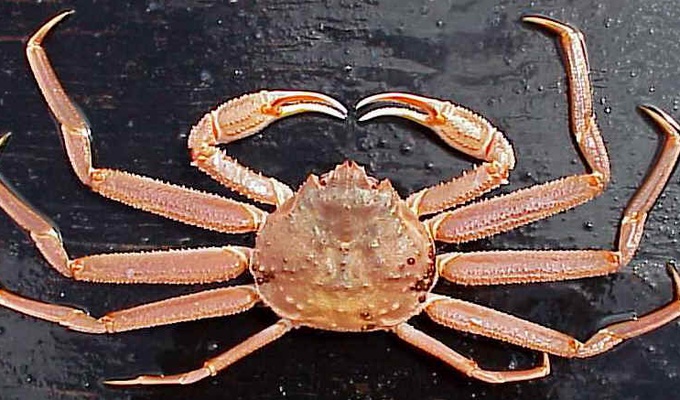Chionoecetes are in the kingdom of Animalia, meaning that they have cells which organized into tissue that will specialize and perform specific functions. The phylum for Chionoecetes is Arthropoda. Members of Arthropoda must have: an exoskeleton, segmented bodies, jointed appendages, bilateral symmetry, and an open circulatory system. Chionoecetes are further categorized in the subphylum crustacea, due to their larval forms and having biramous limbs. Chionoecetes are classified into the Maxillopoda class, being distinguished by a five-six-four body plan ending with a telson. Chionoecetes are in order Decapoda meaning that they have eight pairs of thoracic appendages; five of these are pairs of legs, making them a decapod with 10 legs. The Chionoecetes belong to family Oregoniidae, which use a drag power for their locomotion. The genus Chionoecetes currently contains seven distinct species.
Other names for crabs in this genus include "queen crab" (in Canada) and "spider crab" – they are known by different names in different areas of the world. The generic name Chionoecetes means snow (χιών, chion) inhabitant (οἰκητης, oiketes); opilio means shepherd, and C. opilio is the primary species referred to as snow crab. Marketing strategies, however, employ snow crab for any species in the genus Chionoecetes. The name "snow crab" refers to their being commonly found in cold northern oceans.
